Building Partnerships to Bring Health Improvements to Sierra Leone Communities
Post by Caitlin Loehr, HC3 Program Officer and Emma Vincent, Program Officer II, HC3 Sierra Leone Program , June 22, 2016
In Roruks community in Tonkolili district, the health facility lacks running water and delivery and admission beds, it has a leaking roof and essential drugs and basic vaccines are often out of stock.
In the coastal town of Leicester in Western Rural district, community members are dissatisfied with unhealthy conditions at their facility and the high charges they are forced to pay for things like soap, batteries and phone credit to call the nurses when they are away from the clinics.
It is therefore no surprise that in these communities and throughout Sierra Leone, many people do not think of the facility as the first place to go for routine health care or for health issues like illness or giving birth.
On the other hand, nurses and doctors are frustrated that community members do not visit the facility regularly, making it more challenging for them to spread the word about potential health risks, preventative measures and healthy behaviors.
In the past few weeks, people in Roruks and Leicester and many other communities have been getting together to discuss how they can address the health issues in their community and build a bridge between the community and the facility.
These dialogues are the first step in a series of activities involving the entire community to improve the quality of health care facilities and services. Led by the USAID-funded Health Communication Capacity Collaborative (HC3) program in Sierra Leone, 75 communities throughout north and western Sierra Leone, including Roruks and Leicester, will participate in community engagement activities that culminate with a facility “makeover.”
The facility makeovers will consist of light repairs and re-freshening of facilities, with the specifics of each makeover determined by needs and desires of the community. Using the community perspective to shape the makeover will contribute to increasing demand for services, and a sense of shared ownership will be built through community involvement in the makeover tasks with contributions of supplies, services and labor.
While improving the physical conditions at health facilities will make the facilities more appealing to the communities they serve, the makeovers alone will not be enough to encourage most people to visit their local clinic for routine services and as health issues arise. This will require a broad sweep of cooperation from the entire community to build a relationship of trust and understanding.
Even prior to the Ebola outbreak, tension between communities and health workers had been brewing. Many community members at the meeting in Leicester reported that they had been treated disrespectfully during visits to facilities, with health workers not listening to them or talking to them rudely. Mariatu Sankoh, a mother of four from Roruks, described having to trek several miles to nearby clinics because the clinic in the community did not have reliable electricity to run the refrigerator that stores the vaccines.
Doctors and nurses also feel as if they are being unfairly blamed for many issues at their facilities. At the community dialogue in Leicester, nurse Abibatu Bangura explained some of the complexities around her job, including the cause of long delays for drug supplies as well as the challenges of working with inadequate resources.
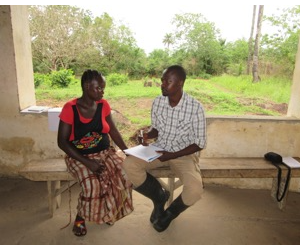 In addition to providing the opportunity to explain the challenges she faces, the community dialogue was also an “eye opener” for Abibatu. “Sitting with members of the community and listening to the way they explain their problems helps me to be able to serve them better,” she added.
In addition to providing the opportunity to explain the challenges she faces, the community dialogue was also an “eye opener” for Abibatu. “Sitting with members of the community and listening to the way they explain their problems helps me to be able to serve them better,” she added.
Lamin Kamara, a well-known Imam in Leicester, also recognized the importance of the community and health workers coming together in dialogue, stating “I feel fine to be part of the facility makeover discussion . . . this meeting has helped us clear the misunderstanding between the clinic and us.”
This understanding and acceptance between the community and health workers lays the foundation for cooperation during the makeover process, and involvement of the entire community from the start will build a shared responsibility. “Now we know that the clinic is ours and we can do the little within our means to keep it functioning,” said Pa Kamara. “I look forward to the linkages that will be created between the health facility and the community, as this will surely improve the health of our community.”
As the dialogues came to an end in Roruks and Leicester, participants were already starting to think about how they would be able to support the makeover of the clinic in their community. In Roruks, Mariatu and other participants indicated their willingness to participate in future meetings and activities related to improving health in the community. “These dialogue meetings have helped us to think and plan for tomorrow and have shown us the steps we are to take to get there,” added Mariatu.
In Leicester, community members are planning to participate in the facility makeover by contributing labor, services and supplies such as water, sticks and sand.
It is hoped that improving community ownership of health, along with fostering ties between the community and health services, will encourage healthy behaviors at home and more proactive care-seeking behaviors, especially by pregnant women and mothers of young children. As such, the community dialogues and facility makeovers will yield improved health outcomes for families and communities long after the facility makeover is complete.

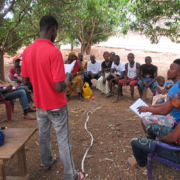
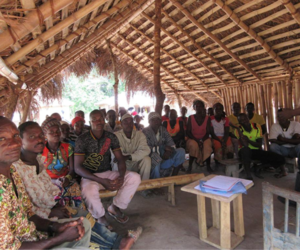
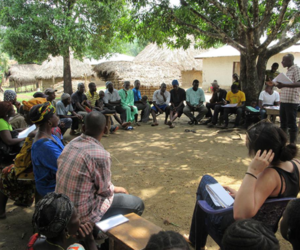
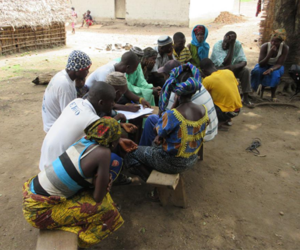






Leave a Reply
Want to join the discussion?Feel free to contribute!